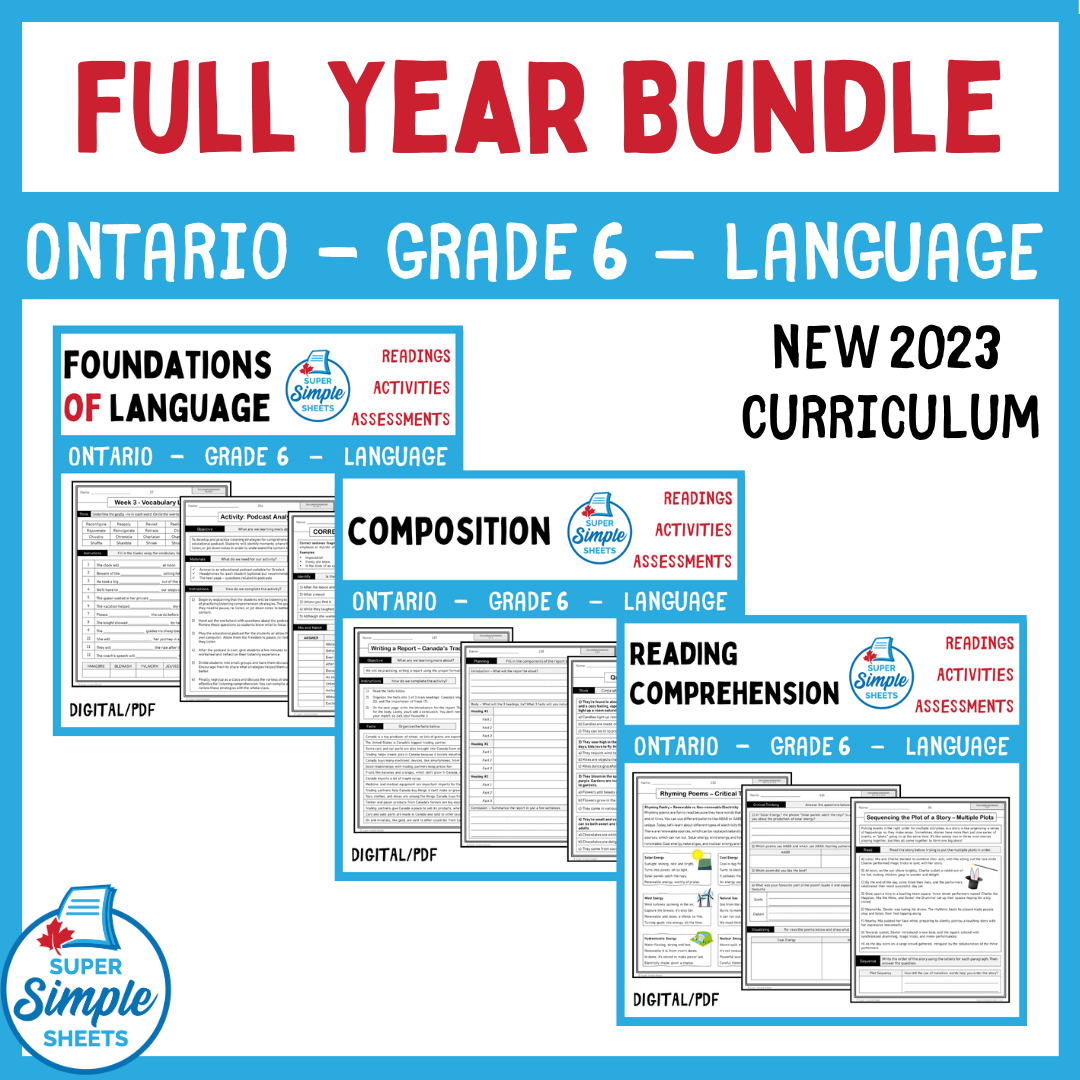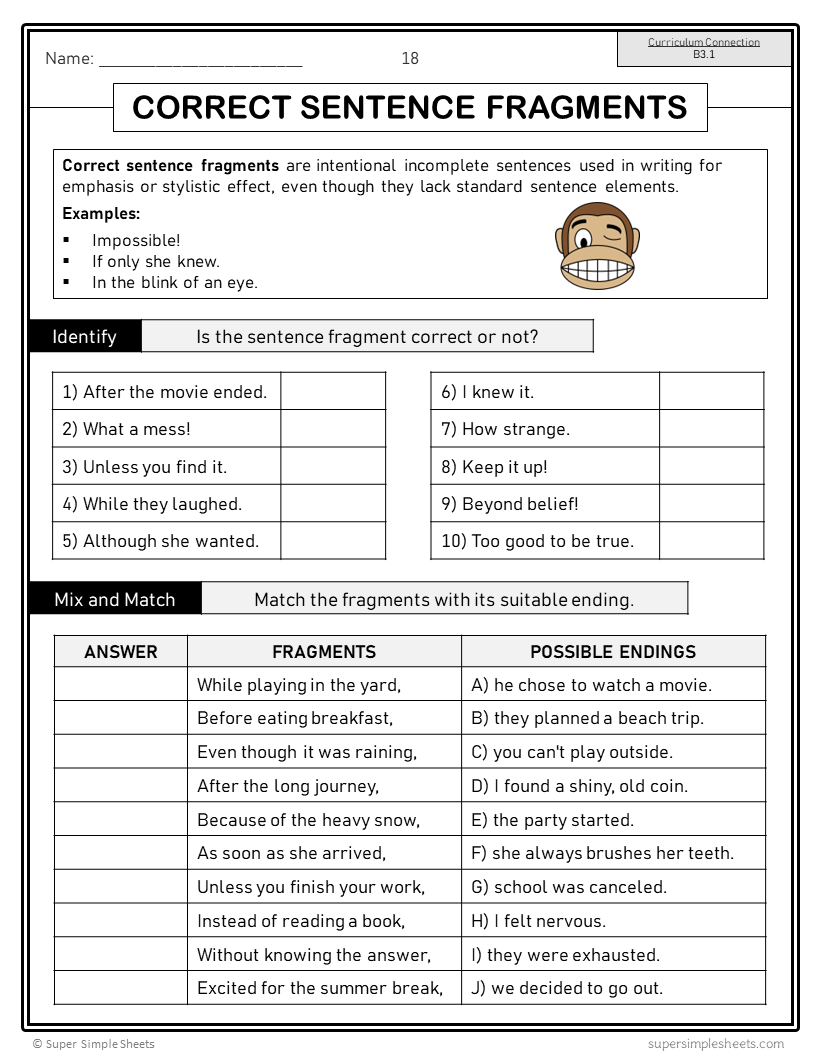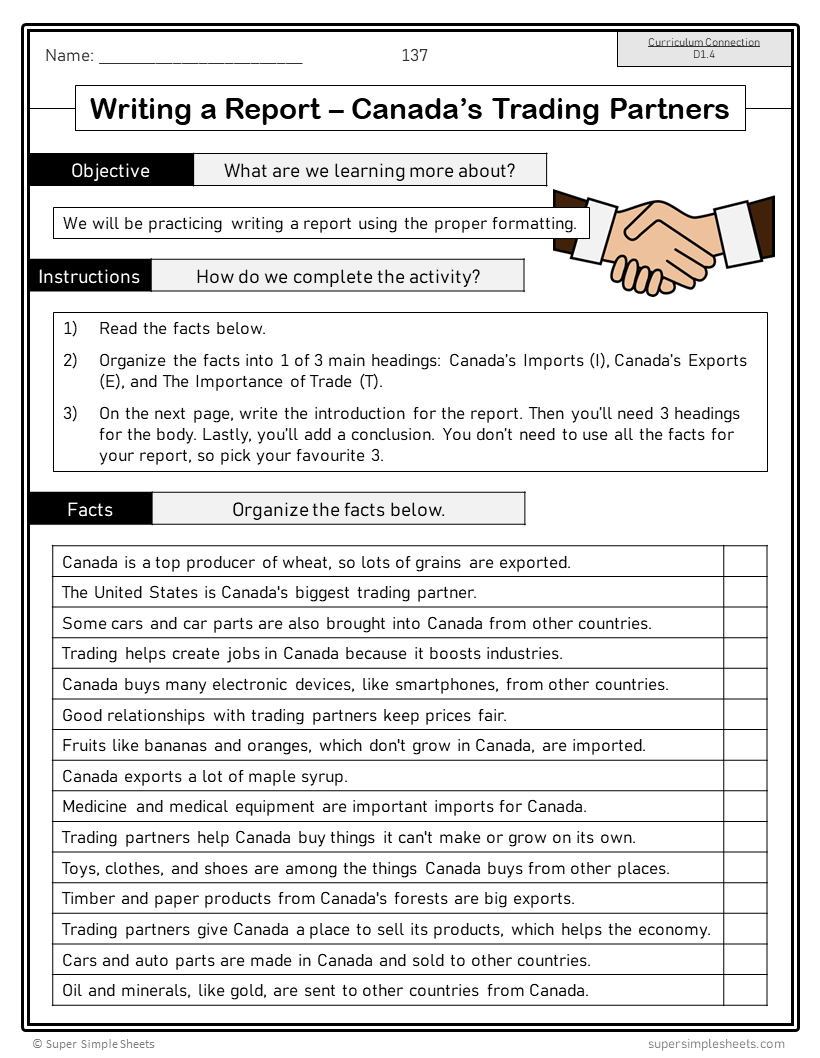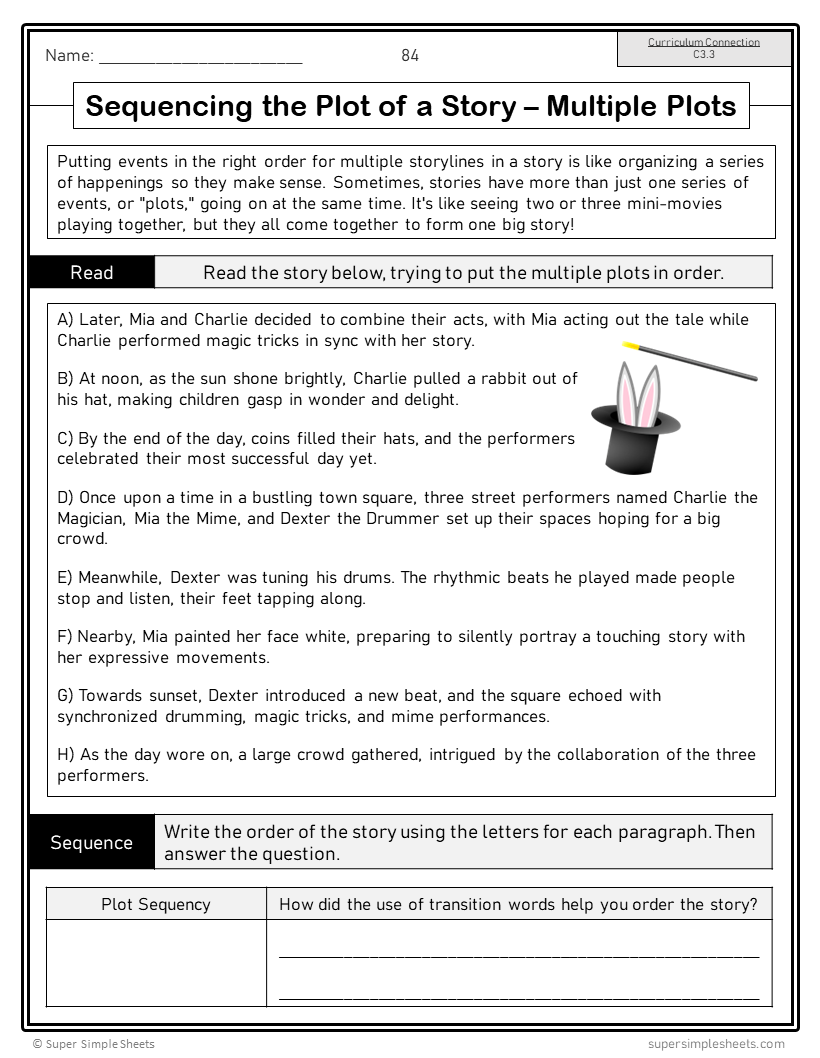Ontario Grade 6 Language - FULL YEAR BUNDLE - NEW 2023 Curriculum
Ontario Grade 6 Language - FULL YEAR BUNDLE - NEW 2023 Curriculum
Interested in a bundle? Shop below instead!
Couldn't load pickup availability
PRODUCT PREVIEW
BOTH GOOGLE SLIDES AND PDF VERSIONS INCLUDED!
FULL YEAR BUNDLE - Teaching made easy! This NO PREP bundle includes everything you need to teach the NEW 2023 Grade 6 Language Curriculum.
Grade 6 - New Ontario 2023 Language Curriculum – Foundations of Language Strand. This resource covers all expectations and learning goals in the Grade 6, 2023 Ontario Language Curriculum – Foundations of Language Strand.
There are 395 activity sheets that align to cover all expectations in the NEW Ontario 2023 Language Curriculum. Included are 30 weeks of activities that cover the curriculum strategically, allowing teachers to use spiral teaching to ensure they are covering the entire curriculum.
With the focus of the new curriculum on explicit teaching of vocabulary and Science of Reading methods, we have created 30 word lists for students to study. Your students will learn a new suffix/prefix each week, as well as new words to add to their vocabulary.
Included in this unit are the overall expectations:
B1: Oral and Non-Verbal Communication – over 10 activities/assignments to cover all specific expectations
B2: Language Foundations for Reading and Writing – included in the weekly activities, students will perform word work to improve their spelling, reading strategies, fluency, and vocabulary.
B3: Language Conventions for Reading and Writing – included in the weekly activities, students will learn about parts of speech, grammar, capitalization and punctuation.
We have also covered Strand A in Language - Literacy Connections and Applications. We have included curriculum connections for all our activities, so you can see exactly what you will be covering by completing each activity. We know this will help when writing report cards!
In addition, we have included a full-year long range plan that outlines what concepts from the curriculum you will be teaching each week, and what prefixes/suffixes/letter blends will be covered.
Some of the concepts covered:
- Suffixes: -ing, -ly, -able, -less, -ment, -ful, -ness, -tion, -ous, -y, -ize, -ship and many more
- Prefixes: un-, re-, dis-, pre-, ex-, in-, non-, sub-, inter-, anti-, mis-, super-, and many more
- Complete sentences versus fragments
- Parts of speech – nouns, verbs, adjectives, adverbs, pronouns, prepositions, conjunctions, interjections
- Run-on sentences
- Four types of sentences – declarative, interrogative, exclamatory, imperative
- Conjunctions – FANBOYS
- Building complex sentences and subordinating conjunctions
- Compound-complex sentences
- Figures of speech – hyperbole, alliteration, idioms, personification
- Creating complex sentences with adjective clauses/relative clauses
- Nouns that are gerunds
- Distinguishing and converting between active and passive voice
- Commas with clauses and commas in a list
- Colons for introducing a list, colons in formal letters, colons in memo salutations
- Colons to indicate a new speaker in script dialogue
- Semicolons versus commas
- Commas with direct address, commas with appositives, commas after transitional words
- Vocabulary – using context clues to read unfamiliar words
- Decoding – chunking strategy
- Identifying synonyms
- Fluency readings
- Using expression and intonations while reading
- Capitals for historical periods or events
- Proper adjectives and capitalization
- Oral communication – listening links activity
- Activities – Socratic Seminar, Podcast Analysis, Listening Stations
- Activities – Speech for different audiences, Public speaking challenge
- Activities – Eye-contact experiment, News reporter role-play
- Weekly quizzes (30 different assessments)
- Answer pages for all activities
Grade 6 - New Ontario 2023 Language Curriculum – Composition: Expressing Ideas and Creating Texts Strand. This resource covers all expectations and learning goals in the Grade 6, 2023 Ontario Language Curriculum – Composition: Expressing Ideas and Creating Texts Strand.
There are 305 activity sheets that are aligned to cover all expectations in the NEW Ontario 2023 Language Curriculum. Included are 10 blocks of content, each covering a different text form. Within each block, the overall and specific expectations are met.
This is a language program developed by a language teacher. We have included exemplars for students to formulate success criteria so they can improve their writing quality. Moreover, we’ve chunked the progressions involved with producing quality writing to ensure all students can progress.
Included in this unit are the overall expectations:
D1. Developing Ideas and Organizing Content: hands-on activities, group work, and many independent work opportunities to develop these skills
D2. Creating Texts – 13 different assignments with planning pages included to scaffold student learning
D3. Publishing, Presenting, and Reflecting – group work revision activities, success criteria, and rubrics as well as opportunities for students to present and reflect on their work.
We have also covered Strand A in Language - Literacy Connections and Applications. We have included curriculum connections for all our activities, so you can see exactly what you will be covering by completing each activity. We know this will help you when writing report cards!
Some of the concepts covered:
- Types of text forms – when to use each one (narratives, letters/emails, persuasive, comic strips, reports, etc.)
- Experiment – writing with planning time versus writing without planning time (no brainstorming)
- Activity – voice in song lyrics
- Personal voice in writing
- How to write a perfect paragraph – topic sentence (hook), body (supporting details), conclusion
- Formal versus informal letter writing – voice in our writing
- Purpose and audience in letter writing – effect on our voice
- Narrative writing – beginning, middle, end
- Analyzing quality stories – building success criteria
- Using quotations in our narratives – dialogue
- Activity – Story Swap Revision Party
- Understanding persuasive writing
- Activity – Being Persuasive: Debate
- Understanding bias in persuasive writing
- Assignment – advertising a new invention
- Confirmation bias in persuasive writing
- Expository text forms – reports, lists, problem/solution report, compare/contrast essay, cause and effect essay
- Writing a How-To-Guide
- Writing a report – Canada’s Trading Partners and All About Elephants
- How to research effectively – trustworthy sources, using keywords
- Activity – Online Treasure Hunt
- Writing a problem/solution report
- Determining solutions to problems
- Types of poems – Haiku, Limerick, Rhyming Poems, Acrostic Poems
- Assignment – writing a poetry children’s book
- Activity – rhyme time analysis
- Cursive writing – Limerick
- Comic strips – onomatopoeia and illustrating graphic texts
- Assignment - creating an online comic strip
- Genres in different text forms – adventure, humour and other genres in graphic text
- Biographies – cross curricular connections: Ben Franklin and Nikola Tesla (electricity), Sally Ride (space)
- How to cite where we find research – bibliography
- Activity – Partner Biography/Bibliography Assignment
- Answer pages for all activities
Grade 6 - Reading Comprehension Strand - New Ontario 2023 Language Curriculum. This resource covers all expectations and learning goals in the Grade 6, 2023 Ontario Language Curriculum – Reading Comprehension Strand.
There are 276 activity sheets that align to cover all expectations in the NEW Ontario 2023 Language Curriculum. These activities can be used on their own, or to compliment the Composition Strand. Students will learn each of the expectations as they progress through the different text forms that follow the same pattern as the Composition unit.
We’ve included a variety of activities, including independent reading responses, group activities, assignments, experiments, and hands-on activities to keep your students engaged.
Included in this unit are the overall expectations:
C1. Knowledge about Texts – taught using 10 different text forms, including poetry, persuasive writing, and reports.
C2. Comprehension Strategies – we’ve included a stand-alone independent reading comprehension package (BINGO and other responses), and these strategies are taught throughout the 276-page unit.
C3. Critical Thinking in Literacy – taught throughout the resource (biases, inferences, literary devices, etc.)
We have also covered Strand A in Language - Literacy Connections and Applications. We have included curriculum connections for all our activities, so you can see exactly what you will be covering by completing each activity. We know this will help when writing report cards!
In addition, we have included a full-year long range plan that outlines what concepts from the curriculum you will be teaching each week/block.
Some of the concepts covered:
- What is reading comprehension?
- Before reading: comprehension strategies – activating prior knowledge and reasons for reading
- During reading: comprehension strategies – questioning, making connections, inferences, predictions, visualizing
- After reading: comprehension strategies – summarizing, making global and local inferences, visualizing
- Activity – goal setting for using comprehension strategies
- Cultural text forms – creation stories and songs
- Letter writing – emails, formal and informal letters, bias
- Implicit and explicit perspectives in letter writing
- Voice in writing – use of cohesive ties and different sentence structures
- Activity - determining the voice used in popular songs
- Narratives – use of literary devices: hyperbole, idiom, alliteration, metaphor
- Perspective in narratives – first-person, second-person, and third-person and advantages/disadvantages of each
- Narratives – sequencing multiple plots in a story and explaining cause and effect
- Indigenous Storywork – 7 Principles: respect, responsibility, reciprocity, reverence, holism, interrelatedness, synergy
- Indigenous storytelling – histories, creation stories, culture, and relationships
- Cross-curricular connections – text forms related to themes in science and social studies (electricity, USMCA)
- Persuasive writing – using critical thinking skills to determine bias
- Finding implicit and explicit evidence in persuasive texts
- Text features in reports – headings, subheadings, pull-down menus, hyperlinks, captions, tables, graphs, etc.
- Reports on diversity, inclusion, and accessibility
- Activity – Determining the quality of information when researching online
- Use of graphs, maps, diagrams, and pictures in reports
- Literary devices used in poetry – idioms and hyperbole
- Assignment – dissecting poems written by Indigenous authors
- Understanding haiku, limericks, acrostic poems, cinquain poems, and rhyming poems
- Bias in book reviews
- Activity: detecting bias in online reviews
- Reading different styles (voices) in book reviews
- Text features in comics, infographics, memes, and maps
- Text features in biographies – using a glossary and a preface to understand a biography
- Chris Hadfield, Elijah Harper, and David Suzuki biographies with prefaces and glossaries
- Answer pages for all activities
This is a comprehensive bundle that will save you hours of planning! It has everything you need to feel confident that you are covering the NEW Ontario Language curriculum.
Share
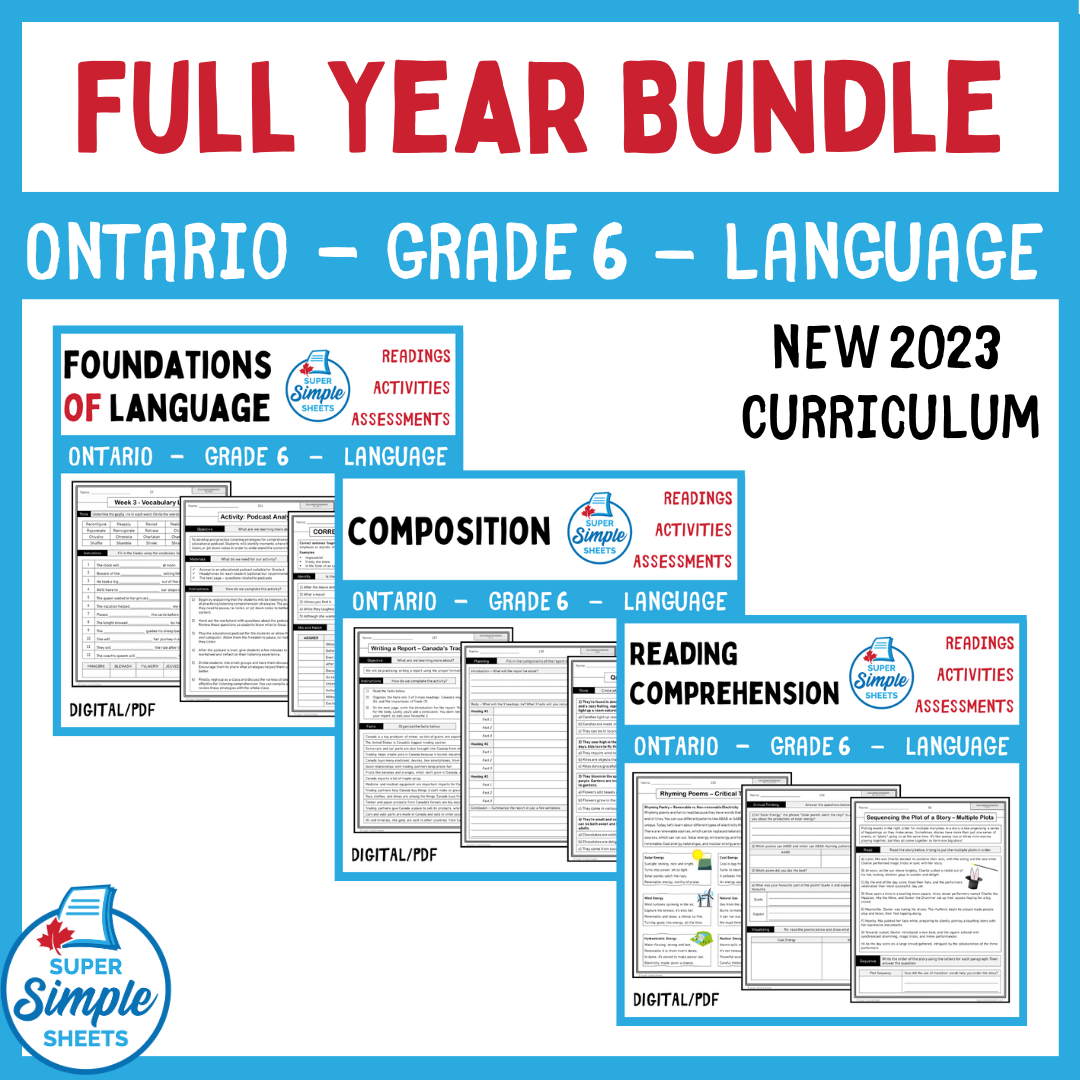
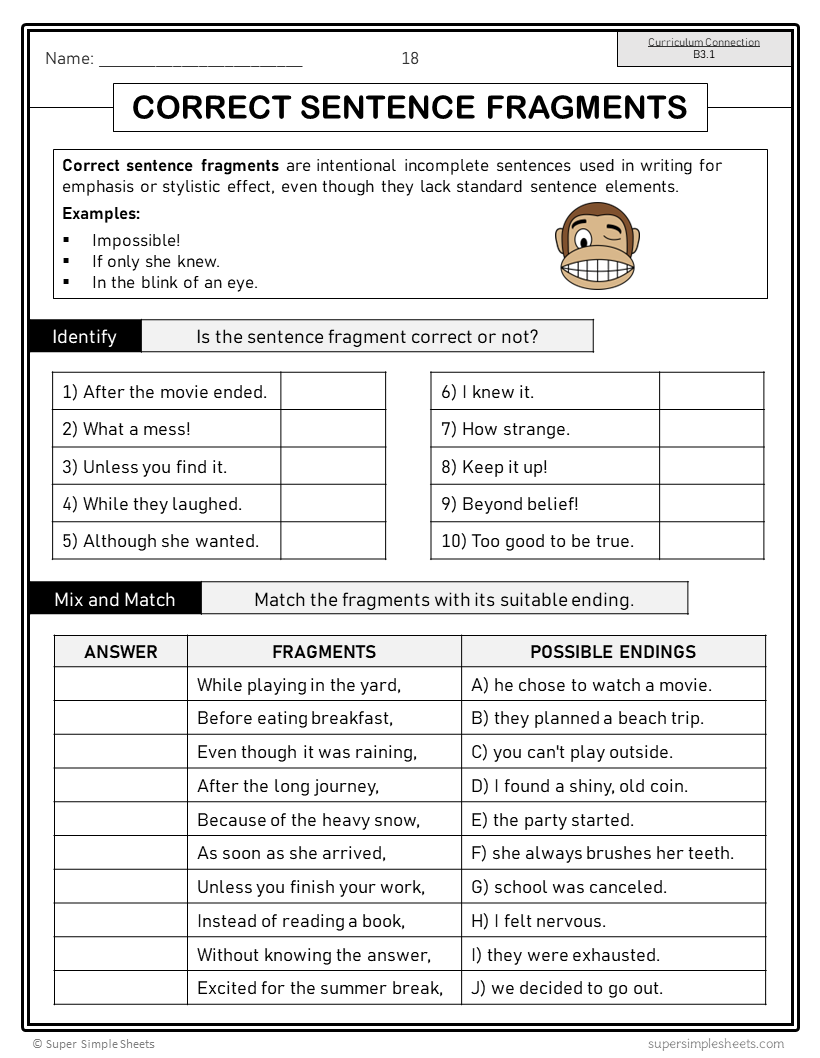
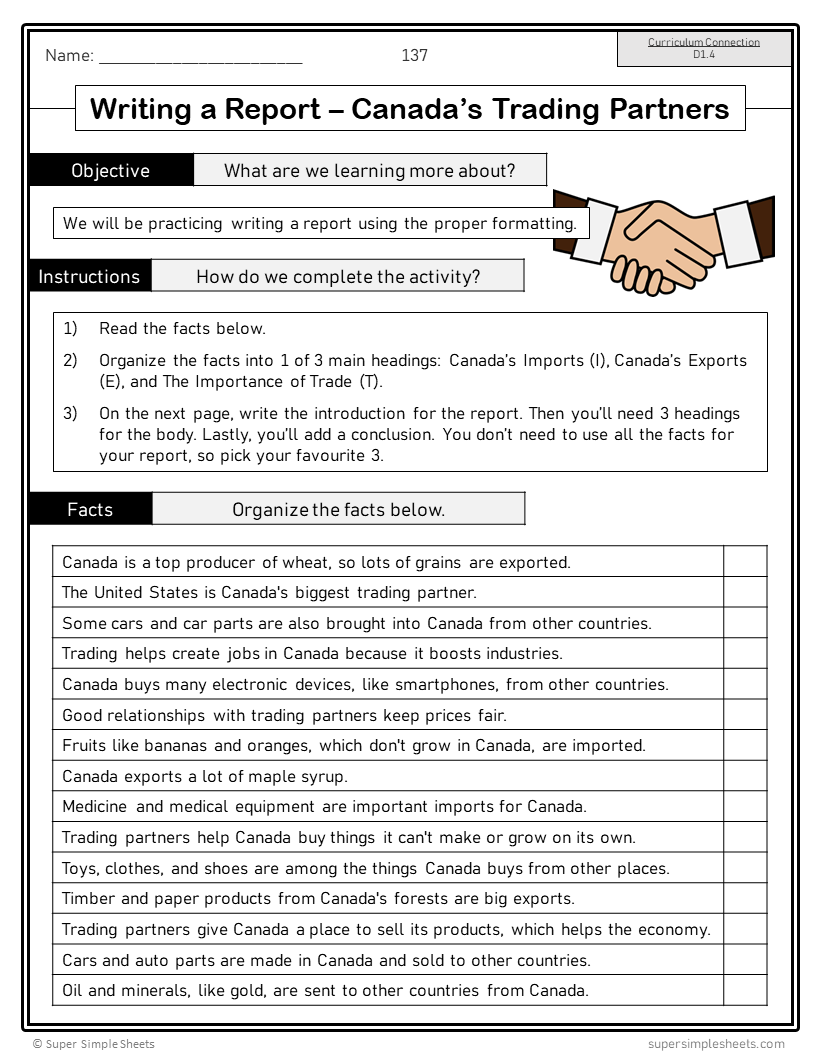
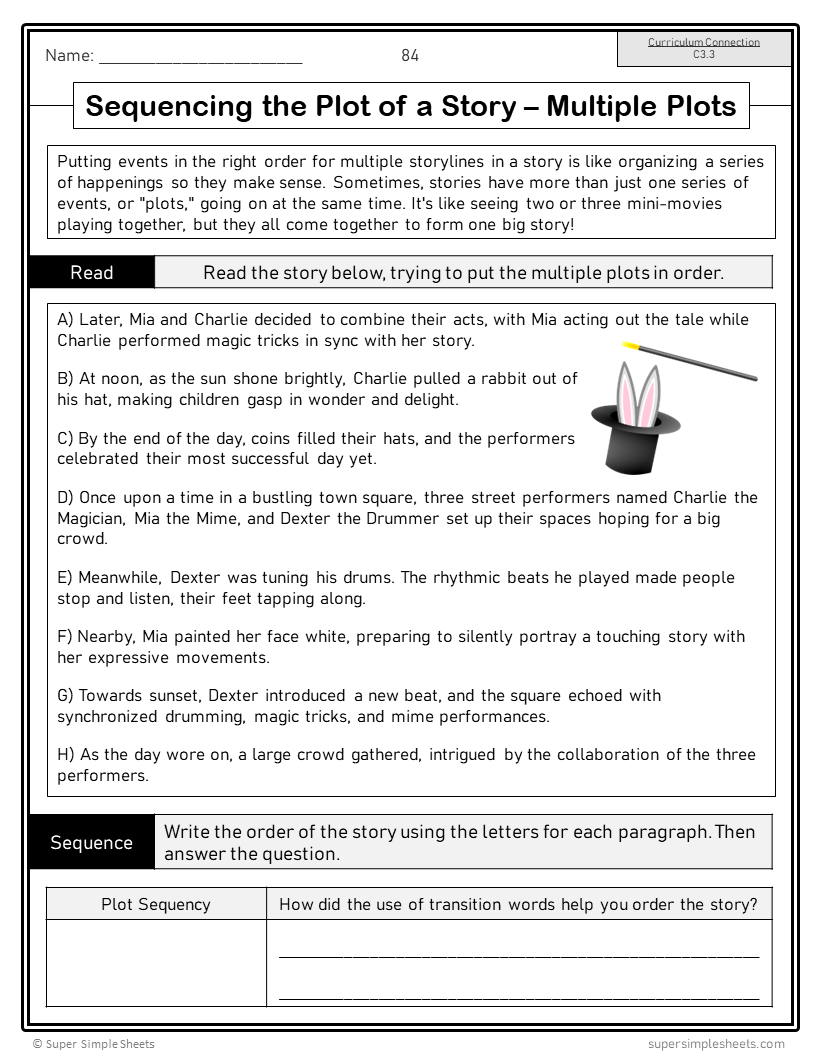
This resources is a complete, comprehensive, and easy to follow program. I purchased the grade 7 package last year and liked it so much that I bought the grade 6 this year.
This resource offers a full-year bundle that covers the Foundations of Language, Reading Comprehension and Composition strands. The activities are engaging for students and align with opportunities for independent responses and group assignments, which will enhance critical thinking. This resource is highly recommended. It’s structured, systematic, and explicit. It ensures thorough and organized coverage of the Grade 6 expectations and learning goals in language.
